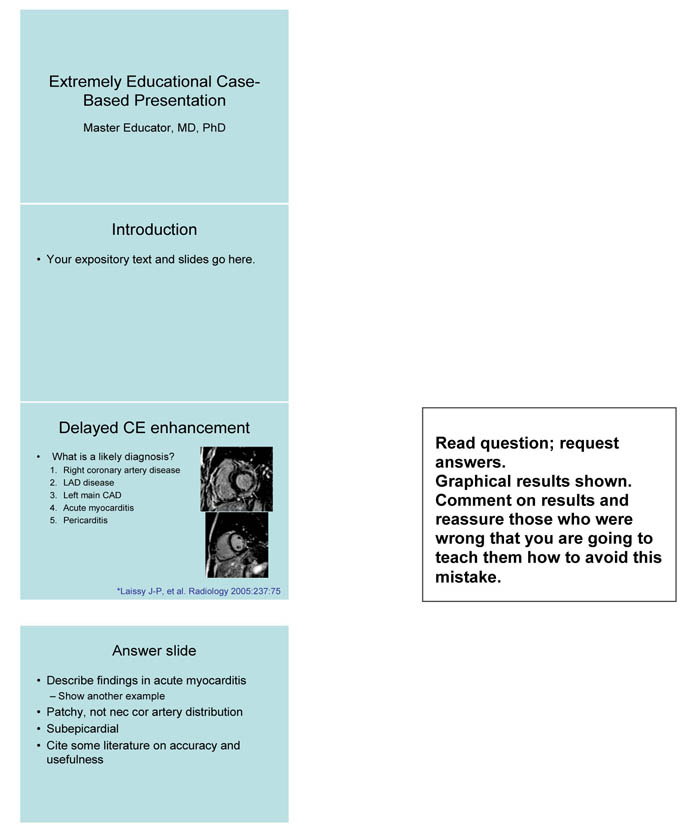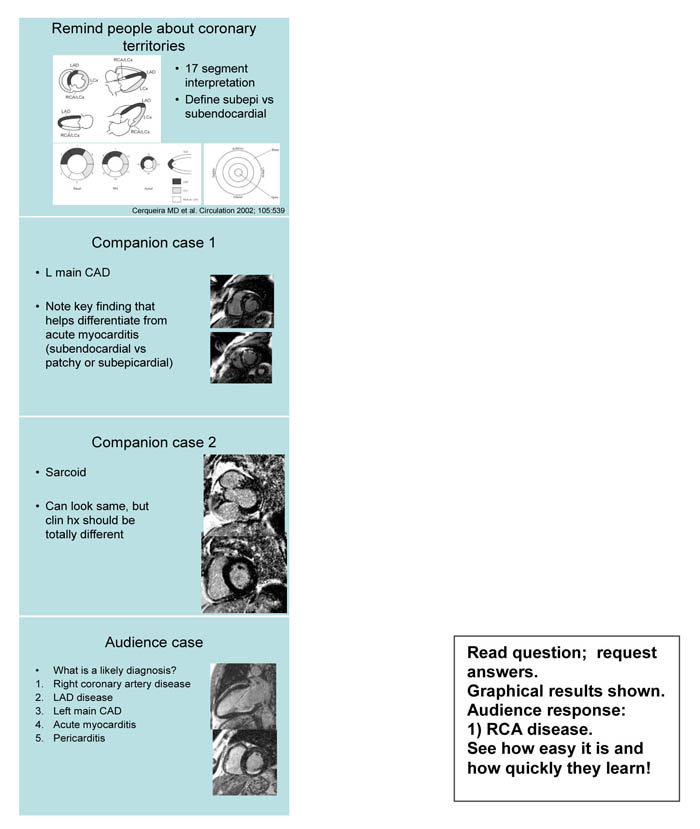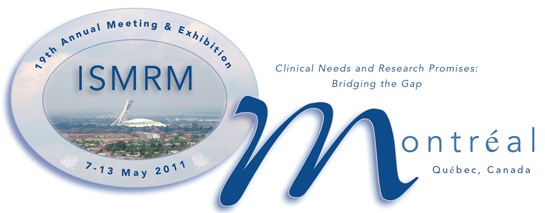|
|
| Palais des congrès de Montréal « 201 Viger Avenue West « Montréal, Québec, Canada |
|
|
|
USE OF AUDIENCE RESPONSE SYSTEM FOR EDUCATIONAL SPEAKERS • CLINICAL INTENSIVE COURSES • CASE-BASED TEACHING • OTHER SELECT COURSES |
|
During the 2010 meeting in Stockholm, a session called "ARS Training" was offered. Please click on the links below to view the video files of this training session. |
|
Overview Again this year, the ISMRM will be offering presenters in Case-Based Teaching Courses, Clinical Intensive Courses and select other sessions the opportunity to use an audience response system to enhance the educational value of their presentations. The use of audience response systems has been shown to increase knowledge retention, create an interactive learning environment, and confirm audience understanding of key points. Designing Your Presentation During your presentation, you will have the opportunity to project multiple choice questions on the screen, and the audience will respond to these questions via wireless keypads. The numbers of actual responses will be displayed graphically on the second screen in real time. Two separate computers and projectors will be used, one to run your main Powerpoint presentation, and another to tally and display audience answers to your questions alongside. You will set aside a portion of your presentation for this Q&A (whether at the end, or interspersed throughout it) There are different patterns of organizing the parts of the presentation with respect to lecture, questions and answers. Some of these possible patterns are: A. Start with a “Mini-lecture”, followed by Question, Possible Answers, Show and Discuss Correct Answer, Discuss All Possible Answers, Next Mini-Lecture, and so on until the entire topic is covered. This order can be reversed so that the “mini-lecture” is given after the correct answer is shown B. Question, Possible Answers, Show and Discuss Correct Answer, Discuss All Possible Answers, and so on until the entire topic is covered, with no formal lecture at all. C. Show all questions at beginning (perhaps 5-7 questions), followed by a didactic style lecture, then repeat all the questions with possible answers at end of the didactic segment. AV Requirements. In the presentation you upload at the meeting, you must include each complete question (including answers) as a slide. (Questions need NOT be submitted in advance of the meeting.) When these slides are displayed, the technician will switch the second, otherwise blank screen to the ARS answer slide, on which the audience response will be shown graphically. Cases In case-based courses, each presentation should be based almost entirely on cases, with 5 – 7 shown during a 30 minute session, depending on the number of teaching points and additional examples shown. In other, didactic courses, we are suggesting at least 4 cases as optimum in a 30 minute talk. Asking Questions Here is an example scenario for each question “module”, 1. Give a brief history and description; show one or two images from the case (about ten seconds); 2. Show and read the question and answer choices (one text slide) for about twenty seconds; That gives the attendees well under one minute to look at and answer a case; 3. Request responses, which will be instantly displayed on the screen to the right; 4. Take a few seconds to examine the results and allow the audience to do the same;
5.
Provide the correct answer, discuss why it is best, etc. It is often
useful to discuss why 6. You may refer back to the presentation to show additional images to underscore teaching points 7. Proceed to next question or continue presentation. Spending 5-8 minutes on a case might be a good time frame. In terms of flow, there are various effective approaches. Some speakers have questions catalogued by difficulty. Another alternative is to group cases by theme and teaching points. The bottom line is to engage the audience with interesting material in an interactive experience. In advance of the meeting · Prepare your slides: Please design your slide presentation using the ISMRM Oral Presentation Guidelines which will soon be posted on the meeting website. · Write your questions: Make sure that all of the questions in the multiple choice list are reasonable answers. In other words, there should not be only one reasonable choice followed by 3 or 4 silly or obviously wrong choices. All the choices should be reasonable choices, but one answer should be better than all the others.
Questions must be in one of
three formats: multiple-choice (2 to 5 choices), Which is the correct choice? 1. choice 1 2. choice 2 3. choice 3 4. choice 4
5.
choice 5 Patients with ___________ present with images like this. 1. choice 1 2. choice 2 True + false Image feature X is common for disease process Y. 1. True 2. False The “Response” slide on the second screen will not include the question text It will only show a 1- 5 array, and when responses are entered, the number of responses and corresponding bar by each question number. The question text will remain visible on the other screen, as a part of your presentation. During the meeting · Smooth operation of the system will be relatively easy. · You will still have the opportunity to make last-minute modifications to your presentation.
·
If you have any
questions prior to your session, the technicians in the Speaker
Ready Room
·
During your session,
ETS-AV will have a technician present to run the audience
·
At this point, you
can discuss the results with the audience. When you are done, Example Here is a very rough sample case-based teaching presentation using the audience response system: Your slides: |
 |
| Your slides: |
 |
